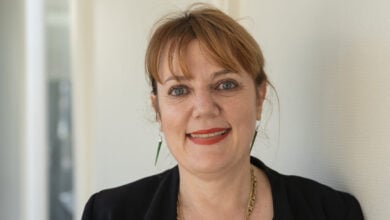Educators “alarmed” at new standardised assessment tender
The government has opened a tender for new standardised assessment tests, leaving educators shocked and worried.

A tender for a new standardised assessment and aromatawai tool was quietly opened on Friday, 7 March, 2025, a move which has shocked educators and quickly garnered vehement opposition.
The request for proposals (RFP) says the Ministry of Education is looking for “a long-term solution to support all schools and kura to effectively enact twice-yearly assessment of learners and is aligned to Years 3 to 10 of the new National curriculum”. The government said the new assessment would generate data to support their education target of 80 percent of Year 8 students at or above the expected curriculum level in reading by 2030.
Read the latest print edition of School News online HERE.
“Unlike many comparable jurisdictions, New Zealand currently has no standardised assessment tool that provides a clear view of how individual students are progressing until NCEA Level 1 (Year 11).”
The move goes against last year’s announcement, which said that mandatory biannual testing in reading, writing and maths could be done through existing e-asTTle or Progressive Assessment Tests.
Leanne Otene, president of the Principals Federation said the proposal was a surprise, and expressed concern that a national test could be designed by an overseas company without adequate understanding of New Zealand’s schools, culture and context.
“Tests are created by jurisdictions to meet many requirements in terms of whether or not they’re culturally responsive, whether they will meet the curriculum of a particular country… so I am concerned.”
Otene was also concerned the tool may be used to compare schools.
NZEI Te Riu Roa Principals Council chair Stephanie Madden was also concerned about the possibility of using this tool to compare schools, and added twice-yearly standardised testing was “outdated and harmful” and risked narrowing teaching focus.
“Moving teachers’ focus to rounds of assessments rather than catering to the needs of our diverse tamariki will end disastrously,” said Madden.
“If testing tools are developed by companies or organisations which lack an understanding of New Zealand’s unique educational landscape and cultural nuance it will be damaging.”
Madden said she was “alarmed” there was no consultation with the education sector, and said any assessment should be “culturally responsive, pedagogically sound, and developed in collaboration with educators”.
She said the union urged the Ministry to halt the proposal until consultations were made.

Writing for The Conversation, University of Waikato academics with the School of Education, Jade Wrathall and Marta Estellés, said the tool “would essentially be a return to a form of national standards”.
They pointed to the documented negative effects of standardised assessment like narrowed teaching focus and impacts on children’s self-esteem.
Pauline Cleaver, acting deputy secretary for the curriculum centre at the Ministry of Education, said the RFP for assessment came because it found e-asTTle was not fit for purpose.
“We have investigated the long-term use of e-asTTle. What that showed is that the tool had technical limitations and that the content does not align to current curriculum expectations. For these reasons further investment in e-asTTle wasn’t viable and instead we are looking at the option of a new tool to meet our needs in assessing student progress against the updated national curricula.”
Cleaver said the Ministry was looking for a tool that would combine the “best features” of e-asTTle but with updated technology and assessment tasks.
She said a national or international provider would be sought that would deliver an assessment tool in both English and te reo Māori.
The Ministry would not say how much the new tool could cost but said it was “one of the most important and powerful levers available to improve the quality of information available to lifting student achievement and closing the equity gap.
“Getting this right will mean that good quality data about students’ learning is available to inform teaching and learning, provide timely information to parents, whānau and caregivers, and inform decisions at every level of the education system.”
Chris Darr, Council for Educational Research chief researcher said PATs were used in over half of New Zealand schools and the Ministry of Education still currently recommended them for use.
“NZCER is pleased that PATs can continue to support teaching and learning,” said Darr.
In a newsletter, Graeme Cosslett, Tumuaki at NZCER clarified the organisation is the independent owner and administrator of the PATs.
“We support schools having access to multiple sources of assessment information, and consider PATs to be a robust standardised assessment option, to be used in low-stakes environments with the primary purpose of supporting teaching a learning.”
Cosslett said NZCER would continue to provide and support the PATs as an option for schools across the country. NZCER is also currently developing new assessments to support “the current focal points in education”. One of these is the new PAT writing tool.
“We remain steadfastly committed to supporting all schools in Aotearoa, and our team are on hand for any enquiries you might have,” said Cosslett.
Last year, NZCER said it did not recommend a single standardised assessment, and said over-reliance on testing would lead to a narrowed curriculum focused on test preparation that could lead to security concerns and potential cheating.
Labour criticised the RFP in a press release, saying the government is “secretly” trying to reinstate standardised testing. Spokesperson Willow-Jean Prime said:
“This sort of under the table decision-making without thorough consultation with schools is concerning. Quietly expanding it to Year 9s and 10s also raises the question – what evidence is she basing these decisions on?
“Having our tamariki undergo standardised testing from a young age only fuels anxiety and stress for students and parents. It pits students against each other and only reinforces in children who don’t have the same out-of-school support that they’re not clever, or are behind other students.
Prime said she was also concerned that offshore providers would not understand the New Zealand context.
“Any new testing must be transparent; schools should be consulted, and the failed experiment of national standards should remain in the past,” Willow-Jean Prime said.









